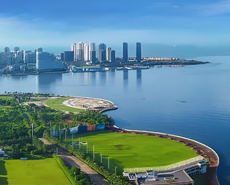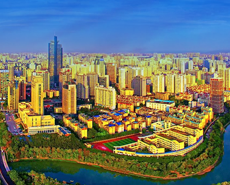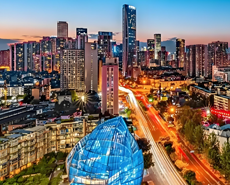
Steel prices in Vietnam to decline further in Q2 under the coronavirus outbreak
----Interview with Brilliant Lim
Vice General Director
Vietnam Germany Steel Mill Joint Stock Company
Vice General Director
Vietnam Germany Steel Mill Joint Stock Company
Vietnam Germany Steel Mill Joint Stock Company was founded in 2002 on a 25-hectare site in Binh Xuyen Industrial Zone, Vinh Phuc province of Vietnam. In 2008, the company was listed on Hanoi stock exchange with VGS for the stock exchange symbol. As a major steel producer in Vietnam, the company’s products includes rebar, wire rod, CRC, HGI and steel pipe.
Asian Metal: Hi Mr Lim, thanks for taking part in the interview. Please make a brief introduction of your company.
Mr Lim: Glad to share my opinions in the interview. Our company is one of major steel mills in Vietnam and we mainly produce rebar, wire rod, CRC, steel pipe and HGI. Equipped with modern production lines, our products specification can meet international standard. We have two rebar production lines, two CRC production lines, fifteen pipe production lines and three HGI production lines, with an annual output of around 700,000t, 300,000t, 250,000t and 250,000t respectively. Our revenue could reach approximately 10 trillion Vietnamese dong.


Asian Metal: Did your company expand production capacity and make some improvement on equipment in recent years?
Mr Lim: We launched one rebar production line, six pipe production lines and one HGI production line in 2016. In recent two years, our production capacity was not expanded yet. However, our output increases every year. As our workers become more and more skilled, they can upgrade the production line, improving the quality and quantity of products.


Asian Metal: Vietnamese steel output kept increasing in recent years. According to a recent report from the Vietnam Iron and Steel Association, the steel output would see a rise of 6%-8% on a year-on-year basis. What are main factors supporting the continuous rise?
Mr Lim: It is inevitable to see continuous rise on the production. Vietnam is a developing country and its demand for construction is not yet saturated. Seeing the improvement of people’s living standard and low salary for workers in recent years, many foreign steel producers invested here in succession to build plants, which improved people's life further by creating opportunities for employment. After that education and technology were developed, production efficiency was boosted obviously. What made steel producers benefit was, products’ quality could catch up with the international standard, which attracted more and more foreign buyers. With increasing foreign exchange, the domestic demand for steel was boosted. As a consequence, the desire for building new plants and expanding production from initial producers grew gradually.
















